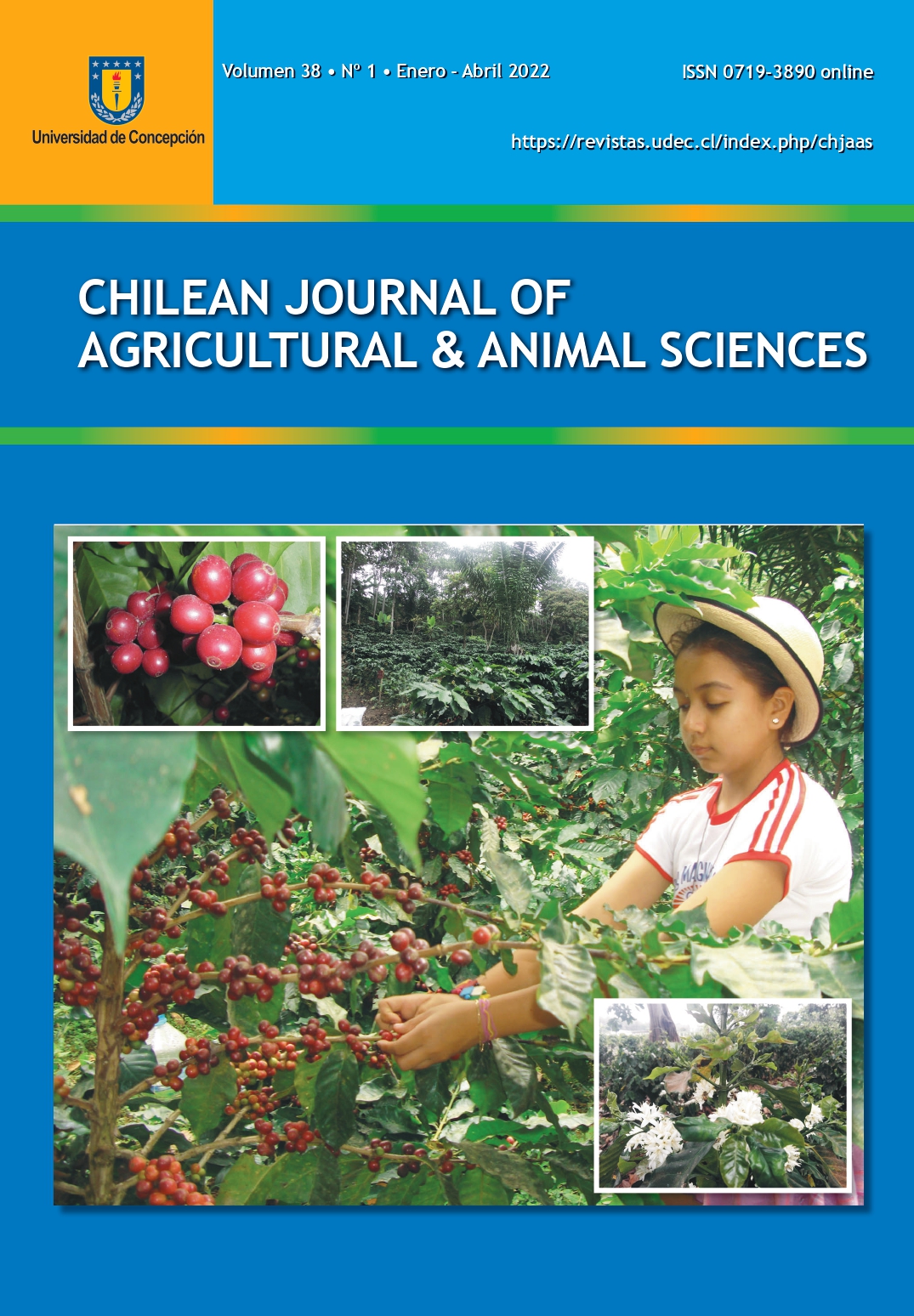IMPACT OF THREE TILLAGE SYSTEMS ON THE FERTILITY OF AN ENTISOL SOIL IN ARID ZONES
DOI:
https://doi.org/10.29393/CHJAAS38-10ITGH30010Keywords:
horizontal tillage, vertical tillage, no tillage, intensive tillage, conservation tillageAbstract
The implementation of inadequate tillage systems in arid zone lands causes the degradation of soil fertility. The objective of this study was to determine the impact of three tillage systems on the fertility of an Entisol soil in an arid zone. Soil structure, macrofauna, organic matter, nitrogen, phosphorus, potassium, pH, salinity and cation exchange capacity (CEC) were evaluated. The research was carried out at Majes Irrigation, Arequipa, Peru. The treatments were: T1) horizontal tillage (disc plow, harrow, seeder); T2) vertical tillage (chisel plow, harrow, seeder); and T3) no tillage (seeder). The experimental design used was randomized complete blocks with three replicates, and evaluations after 3, 10 and 17 months. Corn (Zea mays) and beans (Phaseolus vulgaris) were applied as green manure at 30 days after sowing to each treatment. The three tillage systems favored the formation of angular block-type structures of very fine and fine size, with a weak to moderate degree of aggregation. The composition and abundance of macrofauna increased as tillage time increased. Organic matter did not present statistically significant differences between tillage systems. No statistically significant differences were found in terms of N, P or pH. Horizontal tillage favored the presence of potassium and CEC, and limited the presence of salts, with a statistically significant difference with respect to vertical tillage and no tillage.
Downloads
Published
How to Cite
Issue
Section
Copyright (c) 2022 Universidad de Concepción

This work is licensed under a Creative Commons Attribution 4.0 International License.







